Strewn across the North Atlantic, the wild, wet and windy Faroe Islands are a different world. These 18 rugged isles are a realm of austere beauty, where crystal-clear mountain streams cascade down verdant hillsides dotted with turf-roofed homes, their timber walls painted a mêlée of reds, yellows and blues; a world where sea cliffs, teeming with birdlife, plummet precipitously into the churning Atlantic below; a world where the sea is all-powerful, giving and taking away.
This is still one of the few places in Europe where life moves at an enviably sedate pace, and where the forces of nature and vagaries of the climate mean everything to the people who live here. Agreed, the weather can be unreliable, even downright inclement at times – but the good news is that conditions in the middle of the Atlantic change fast, so you’ll never have long to wait for a glimpse of the sun.
So if you like your holidays remote – and we mean really remote – then these are the best places to stay on the islands. You really will feel like you are at the end of the world.
Saksun
Barely 30 people today live in Saksun, a wonderfully remote hillside village strung out along the banks of the Dalá river close to Streymoy’s northwestern tip, which has become a favourite summer day trip for many Faroese. The setting is austere in the extreme: high rocky knolls bear down on the tiny settlement on three sides, creating the impression of a natural amphitheatre.
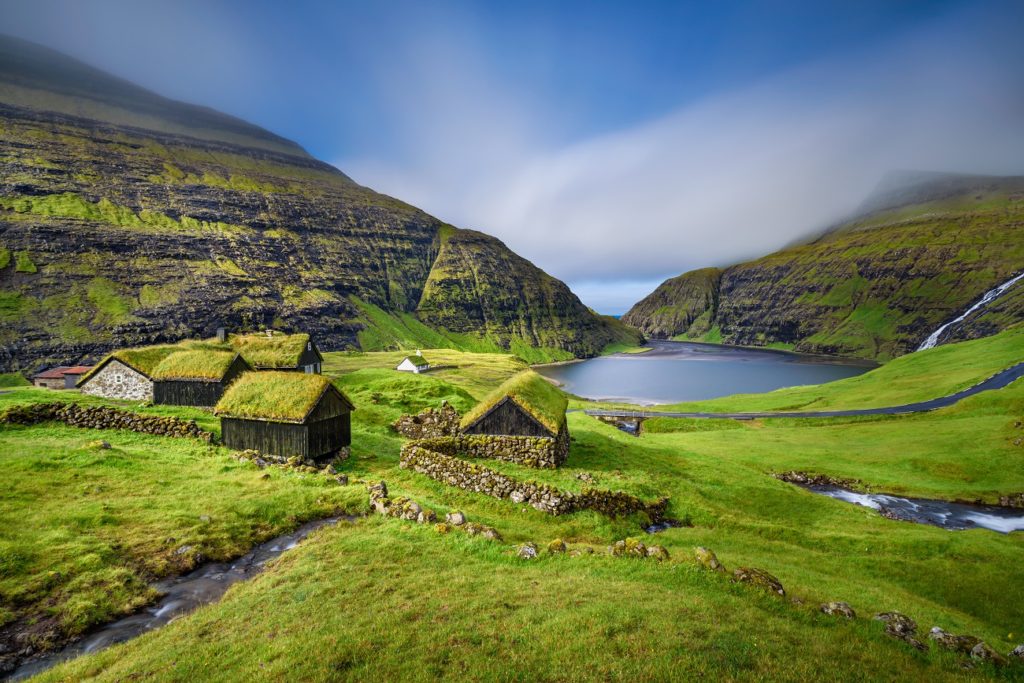
While you’re in Saksun it’s worth making the effort to walk down to the lagoon, from where it’s possible to continue on to the open sea. The best approach is from the western side of the Dalá river – stick to the path and follow the river. At low tide it’s possible to walk along the sandy shore of the lagoon around the headland which marks the neck of Pollurin round to the sea. At high tide, it’s best to follow the path a little higher up the hillside; the surf crashing against the narrow sandy inlet to Pollurin is quite a remarkable sight.
Gásadalur
Until 2006, Gásadalur was the only Faroese settlement not accessible by road since it was considered too costly to blast through the rock and connect Vágar’s most remote outpost, home to barely a dozen people, with the rest of the country. However, following a generous government rethink, engineers did just that and the 1.7km-long tunnel to Gásadalur is now reality, bringing the hamlet’s blissful isolation to an end.
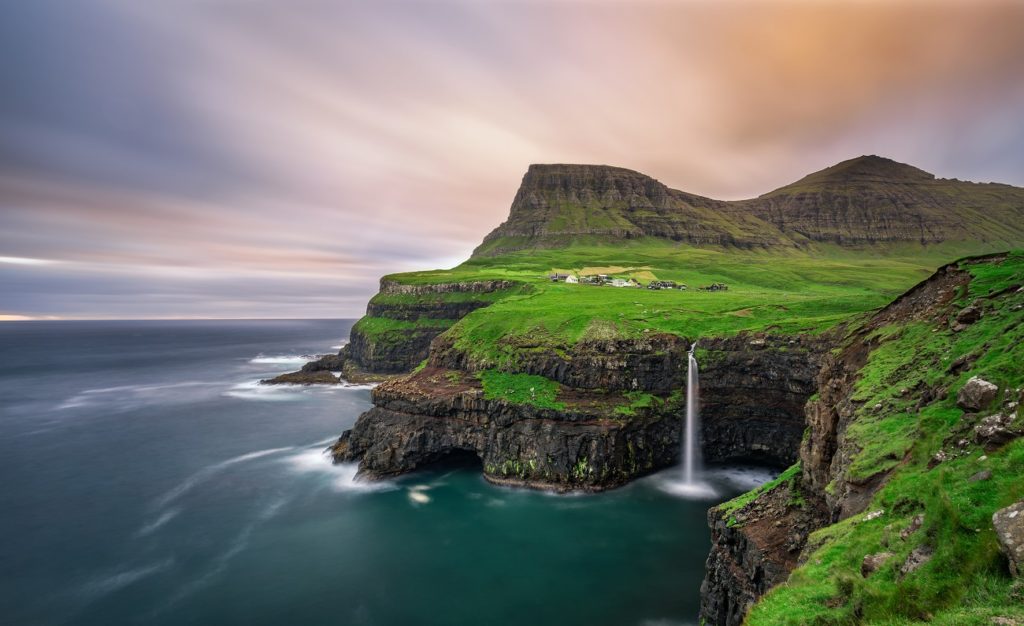
At the entrance to the village, there’s a car park where visitors are encouraged to leave their vehicles to explore the settlement on foot – carefully noting the signs instructing you to keep to the paths and not to trample the hay growing in the surrounding fields. The gaggle of colourful houses that comprise this remote community are grouped together on the only area of flat land for miles around on the gently sloping western side of the valley formed by the Dalá river.
Beginning from the top left of the village, there’s a pleasant short walk of around 20 minutes to be taken by following the yellow-and-red marker posts, which leads out to the cliffs and up to a wooden bench, from where you can stare at the crashing waves below and enjoy tremendous views of the east coast of Mykines.
Lopra
From Vágur, it’s now a short drive of around 6km to the tiny village of Lopra, where a whaling station once operated down by the harbour from 1901 to 1953. However, there’s nothing to see of the former site today; instead, Lopra is known as the location of Frítíðarhúsið, a collection of four comfortable two-bedroom self-contained apartments.
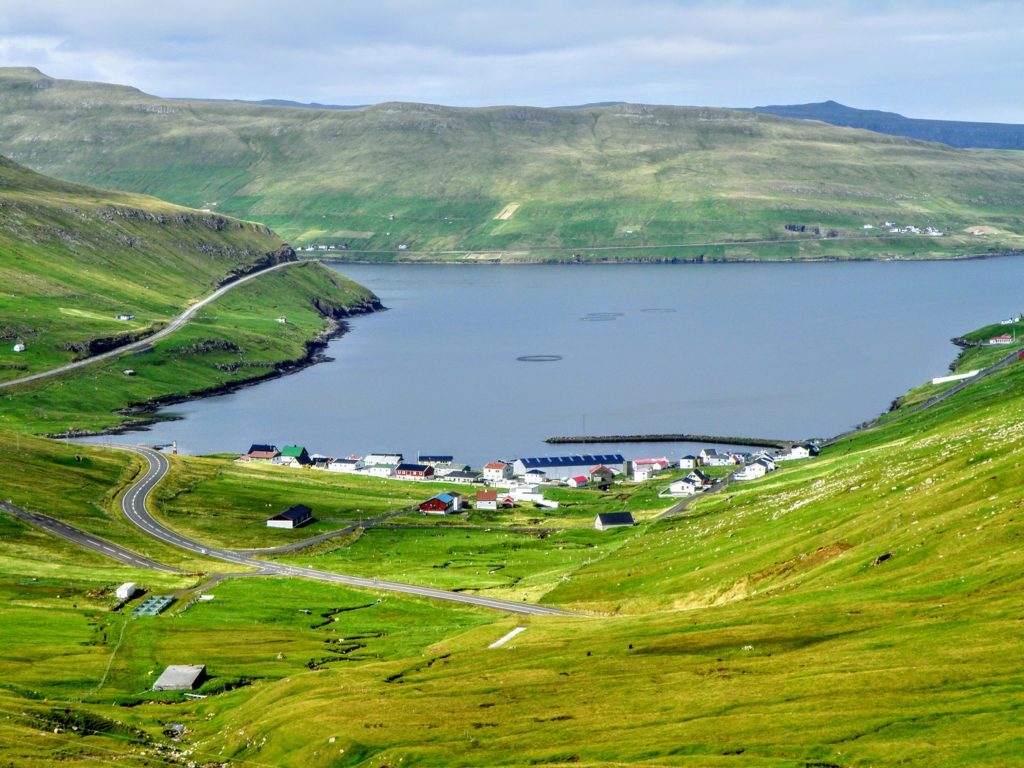
Lopra is about as remote as you can get in the Faroes and it’s certainly a long way from Tórshavn – if you’re looking for splendid isolation, the apartments here are hard to beat. Indeed, holed up here when winter storms tear down the valley, you can be forgiven for thinking that the roof could blow off at any moment.
Akraberg
The village of Akraberg is the most southerly point of the Faroe Islands. This wonderfully remote rocky promontory, which juts out proudly into the churning waves of the North Atlantic, is a suitably enigmatic spot. At the end of the road there’s a viewpoint.
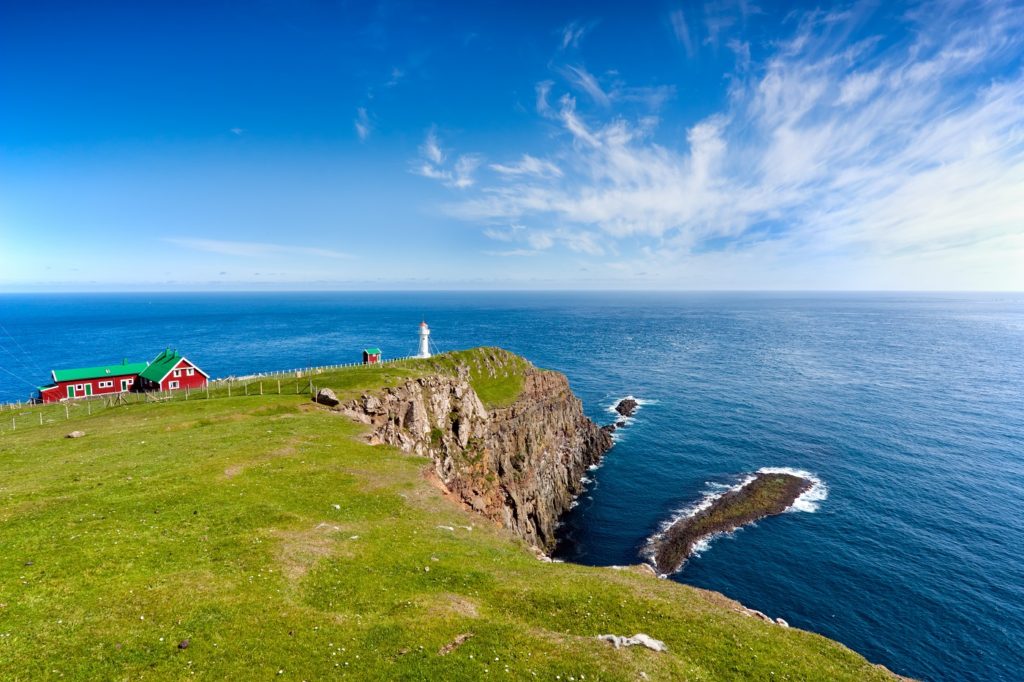
During World War II, British soldiers were regularly here, maintaining the lighthouse and a radar station that scanned the sea and skies south of the Faroes; some of the pillboxes they built as part of anti-invasion preparations are still standing.
Akraberg is a great place to sit and contemplate not only the breathtaking beauty of these 18 barren and windswept islands lost in the North Atlantic, but also their remoteness: from here, the nearest landfall is not the Shetland Islands, as many Faroese people mistakenly believe, but two uninhabited Scottish islands: North Rona (71km northeast of the Butt of Lewis in the Outer Hebrides and 75km northwest of Cape Wrath on the Scottish mainland), which lies 257km to the south; and the skerry, Sula Sgeir, which lies 258km from Akraberg and 18km west of North Rona.
Hestur
Separated from southwestern Streymoy by the choppy waters of Hestfjørður fjord, the 6km² island of Hestur is home to just 15 people, most of whom live in the cluster of houses grouped around the harbour midway along the sheltered east coast.
Peaceful and uneventful, Hestur is the place to come if you want to experience the Faroes at their most remote without trekking up to the far north of the country. The island’s charms are to be found in a stroll up and down the one and only road that runs the length of the east coast, petering out past the Hvannagjógv cleft at the lighthouse (allow 1hr in each direction), or a hike up to the high land known as Heyggjur.
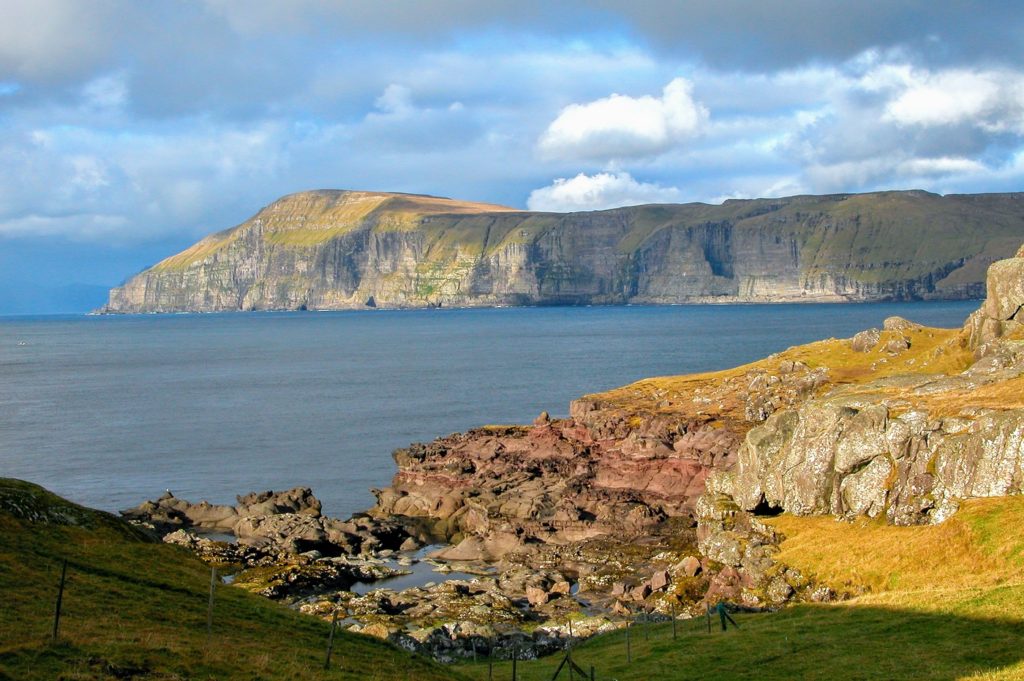
Although there are no marked walking paths on the island, it is possible, with local advice, to reach the flat-topped Eggjarrók and Múlin peaks, where some really quite stunning views unfold. Up here you’re well above the hills that divide Kirkjubøur from Tórshavn over on Streymoy and you have picture-perfect vistas of neighbouring Koltur, barely a couple of kilometres away across Kolturssund sound.
More information
Discover more of the delights of the Faroe Islands in our comprehensive guide: